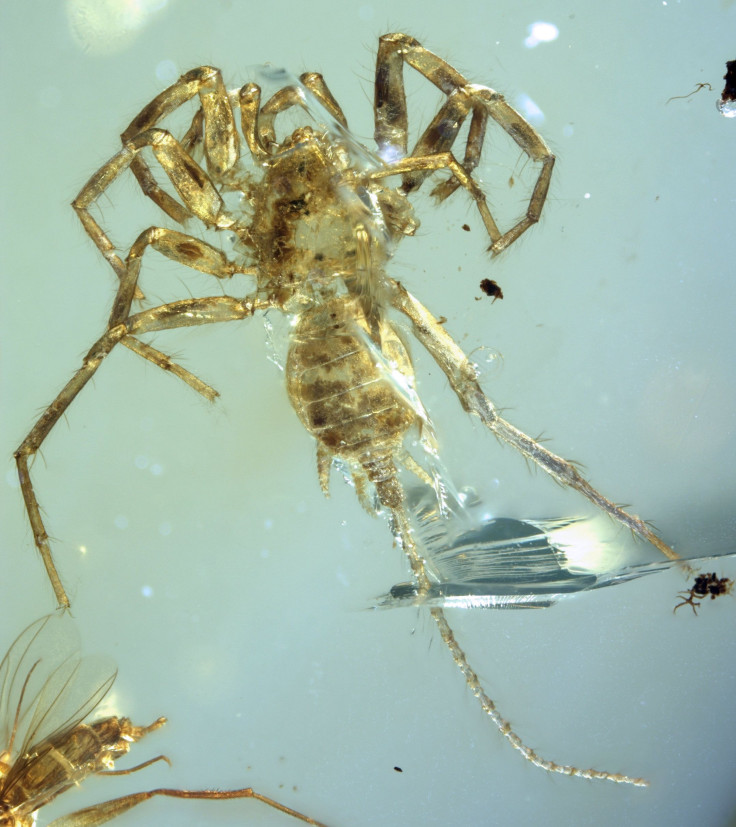Spiders Had Tails 100 Million Years Ago, Fossil Shows

Scientists have discovered a spider from 100 million years ago that had a tail, making it a potent nightmare fuel when its fangs and webbing are added to the mix.
The spider species was frozen in amber during the middle of the Cretaceous geological period — when dinosaurs ruled the Earth — in what is now Myanmar. A study in the journal Nature Ecology & Evolution describes the tail as “whip-like” and says it hints at a previously unknown “lineage of tailed spiders” going back millions of years.
The experts have named the newly discovered species Chimerarachne yingi, with the genus name coming from the fire-breathing chimera in Greek mythology that had the head of a lion, the body of a goat and the tail of a serpent. The word, which literally means “she-goat,” has since become a term used to describe a hybrid made from the body parts of multiple animals.
There were four of the tailed spider fossils found. Their bodies are close to one-tenth of an inch long but their tails more than double their length.
“No living spider has a tail, although some relatives of spiders, the vinegaroons, do have an anal flagellum,” the University of Kansas said in a statement. In addition to its tail, “the new animal resembles a spider in having fangs, male pedipalps, four walking legs and silk-producing spinnerets at its rear.”
It’s possible, however, that the silk was not used to spin webs. According to the study, the chimera spider may have been using the silk to wrap eggs, a function that has previously been suggested to be the original purpose of spinnerets.
Researchers have previously found creatures from between roughly 380 million and 290 million years ago that looked like tailed spiders but did not have spinnerets, so the new find adds a piece to the puzzle of the spider’s evolutionary lineage.
“That’s why the new one is really interesting, apart from the fact that it’s much younger — it seems to be an intermediate form,” researcher Paul Selden said in the Kansas statement. “In our analysis, it comes out sort of in between the older one that hadn’t developed the spinneret and modern spider that has lost the tail.”
The tail was likely a sensory appendage, like an antenna, Selden said. But it’s hard to know what the chimera spider’s daily life was like.
“We can only speculate that, because it was trapped in amber, we assume it was living on or around tree trunks,” he said. “Like all spiders it would have been a carnivore and would have eaten insects, I imagine.”
Selden expressed hope that there could be some living descendants of the creature — with tails — waiting to be found: “We haven’t found them, but some of these forests aren’t that well-studied, and it’s only a tiny creature.”

© Copyright IBTimes 2025. All rights reserved.




















